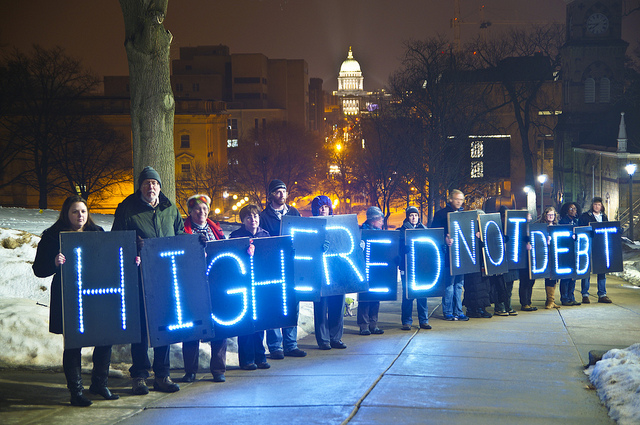By Kristen Vake
Since the time she was 13 years old Nena Delgado has had a heavy weight on her shoulders. Her dad passed away that year, leaving her mom to provide for her and her younger sister. As soon as Nena was old enough to work, she did, and she soon became her mom’s partner in raising her younger sister.
“I was kind of thrown into this co-parent situation where I became my mom’s other partner in raising my sister,” said the now 23-year-old. “So I feel like I had to mature at a very young age and that I had to grow up very fast.”
A few years before graduating high school Delgado realized that college was expensive and she knew her mom would not be able to help pay for it. After her dad passed away they had medical expenses and funeral costs to pay for, leaving her family with no savings and no funds to put away for college. Nena worked hard through high school in hopes of getting scholarships to pay for college.
“I got the good grades and I did a lot of extra curricular activities in high school,” she said. “I applied to as many colleges as I could to see which one would give me the most money because I knew that was how I was going to be able to get to school.”
[vimeo 159274962 w=474]
Delgado is not alone in this. Since 2012, student loan debt has reached an all-time high of more than $1.2 trillion and growing. This hasn’t always been an issue, according to Julie Collins, Director of Financial Aid at Northwestern University’s Medill School. Collins has worked in financial aid for 15 years. She said borrowing has changed in one significant way. “Students are borrowing for the entire cost of attending school,” she said. “In the past students with their families would try to contribute something. But that family contribution, that student contribution, is no longer there.”
One of the factors is the increasing cost of tuition. Student loan debt has risen nearly 70 percent in the last five years. Undergraduate tuition at private non-profit colleges and universities jumped $780 between the 2012 school year and the 2013 school year, according to debt.com.
Presidential candidates have used the issue as a platform to reach young voters. Hillary Clinton’s plan, the New College Compact, focuses on debt-free college. She wants students to pay only what they can afford. Bernie Sanders’ plan is called the College for All Act, and focuses on tuition-free tuition. According to his website, this plan would be paid for by a less-than one percent tax on Wall Street speculators and would make public colleges and universities tuition free. Democrats aren’t the only ones with a plan for student debt. Before he dropped out of the race, Republican candidate Marco Rubio — who has been open about his struggles with student loan debt — put out a plan called the Dynamic Repayment Act. It was geared toward current student loan debt held by graduates and focused on income-based repayment and forgiveness after 20 and 30 years of payments.
Collins says the cost of tuition is not the only issue.
“Students are borrowing loans with interest rates that are higher than a mortgage” said Collins, who suggested that more workable plans would “bring down interest rates. Increase the subsidized Stafford loan and look at ways to ease the debt burden for students who already have the loan debt.”
Delgado is now a financial entrepreneur and she said her experience with debt ignited her passion to help others. “I didn’t have anything to start college off with that’s one of the reasons I put myself in so much debt,” she said. “So I see the personal aspect in this…to show people how to protect themselves so they don’t have to go through what me and my family went through.”

